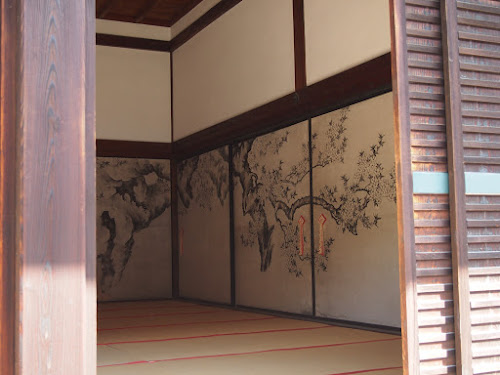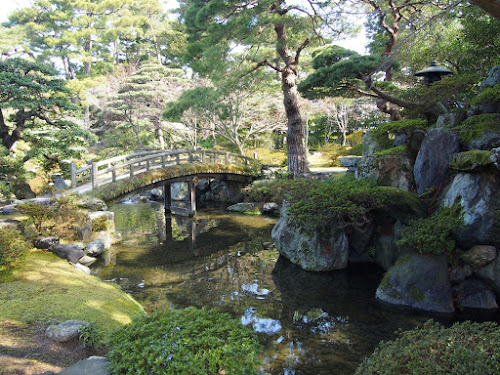We’re back in Japan to visit Kyle & Ai.
Since it was a work day for Ai, we headed into Kyoto with Kyle for a tour of the Imperial Palace.
Even though it was a brisk day in Kyoto, we learned there were another 9 1/2 inches of snow back home. It was here in Kyoto that Shogun Tokugawa turned over power to Emperor Meiji in 1868, ending Kyoto’s 1,000 years as the capital of Japan when the Emperor moved his capital to Tokyo.
The main ceremonial building of the palace complex is the Shishinden, where enthronement ceremonies took place. When Emperor Akihito acceded to the throne in 1989, the Imperial thrones were flown by helicopter to the Imperial Palace in Tokyo.
The feet of the Emperor at Kyoto never touched the ground. The Seiryoden was the Emperor’s residence. He would sit on raised tatamis to receive people and retreat to the tent behind when he tired. If he left the building he would be carried.
Of the 1,800 paintings in the Palace, these are a few of the very few that can be seen by the public. They adorn waiting rooms for aristocrats seeking audiences with the Emperor. The lowest order of nobles were assigned to the room decorated with blossomin cherry trees and with red tapes between the tatami mats. The next highest group used the room with cranes and white tapes between the tatamis. The very highest of the nobles waited in the room with white tapes and tigers on the walls. In its adoption by the Japanese, the zodiac retained the tiger even though the only sign of tigers ever having lived in Japan are the fossil remains of prehistoric times. However, the tiger has always been a potent symbol of bravery, dignity and the power to protect.
The Oikeniwa Garden, inside the palace walls, provided a moment of traquil reflection . . .










